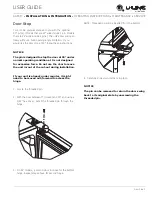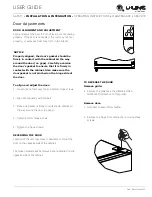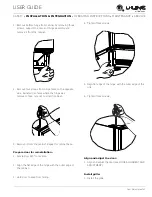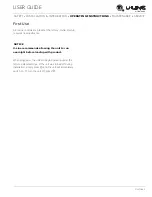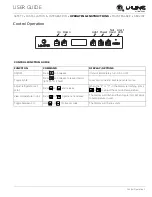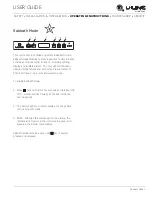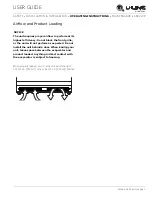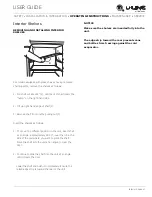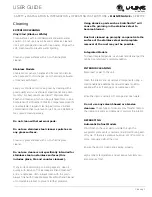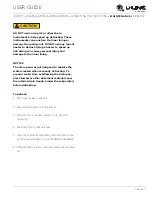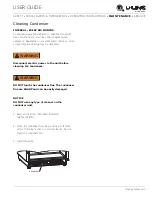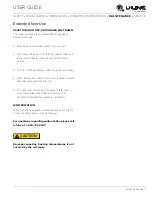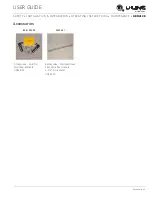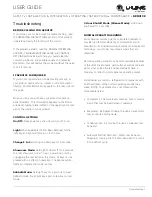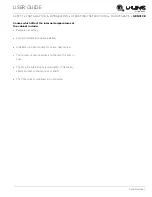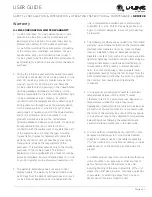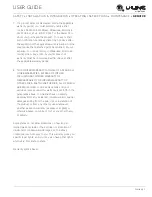
USER GUIDE
Troubleshooting 1
u-line.com
SAFETY • INSTALLATION & INTEGRATION • OPERATING INSTRUCTIONS • MAINTENANCE •
SERVICE
Troubleshooting
BEFORE CALLING FOR SERVICE
If you think your U-Line product is malfunctioning, read
the OPERATING INSTRUCTIONS section of this guide to
understand clearly the function of the control.
If the problem persists, read the NORMAL OPERATING
SOUNDS, TROUBLESHOOTING GUIDE and CONTROL
OPTIONS sections below to help you quickly identify
common problems, and possible causes and remedies.
Most often, this will resolve the problem without the need
to call for service.
IF SERVICE IS REQUIRED
If you do not understand a troubleshooting remedy, or
your product needs service, contact U-Line Corporation
directly. Contact information appears on the rear cover of
this guide.
When you call, you will need your product Model and
Serial Numbers. This information appears on the Model
and Serial number plate located on the upper right or rear
wall of the interior of your product.
CONTROL OPTIONS
On/Off:
Press power key and unit will turn off or on.
Light:
When applicable (Table: Basic Settings) hit the
light key and light will remain on for 3 hours.
Change F to C:
Hold up and down key for 5 seconds.
Showroom Mode:
Hold Light and on/off for 5 seconds
to enter showroom mode. To exit, power down unit by
unplugging the unit. While in this mode, all keys can be
pressed with no effect on operation. The degree symbol
flashes to indicate the mode is active.
Sabbath Mode:
Hold light key for 5 seconds to enter
Sabbath mode. Press light key again to resume normal
mode.
3 Hour Shutoff Mode (Silence Mode):
Hold down
and Power for 5 seconds.
NORMAL OPERATING SOUNDS
All models incorporate rigid foam insulated cabinets to
provide high thermal efficiency and maximum sound
reduction for its internal working components. Despite this
technology, your model may make sounds that are
unfamiliar.
Normal operating sounds may be more noticeable because
of the unit’s environment. Hard surfaces such as cabinets,
wood, vinyl or tiled floors and paneled walls have a
tendency to reflect normal appliance operating noises.
Listed below are common refrigeration components with
brief description of the normal operating sounds they
make. NOTE: Your product may not contain all the
components listed.
• Compressor: The compressor makes a hum or pulsing
sound that may be heard when it operates.
• Evaporator: Refrigerant flowing through an evaporator
may sound like boiling liquid.
• Condenser Fan: Air moving through a condenser may
be heard.
• Automatic Defrost Drain Pan: Water may be heard
dripping or running into the drain pan when the unit is
in the defrost cycle.

